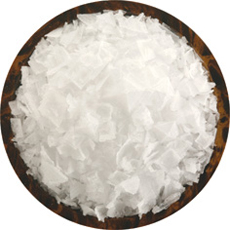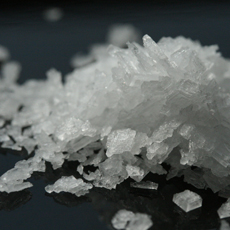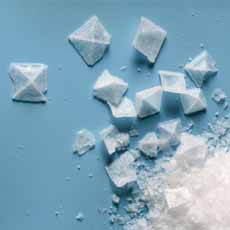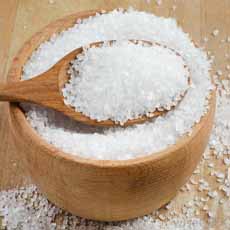TIP OF THE DAY: Flaky Salt (Or Flake Salt)
 [1] Cypress flake salt from the Mediterranean (photo courtesy SaltWorks).
|
Do you have a container of flaky salt at home? If you cook, you should.
In the world of culinary salts, flake/flaky salts are coarse-grained salts with large, visible grains (the flakes). It’s a favorite for what chefs, who use it as a finishing salt (after the food is cooked or otherwise prepared), for what they call a pop of flavor and crunch. Salt is harvested from either sea water or rock-salt deposits in salt mines, which aeons ago were underground seas. Sea Salt Sea salts are produced over the world, and flake salts—flat flakes—are a subset. While fewer areas produce them, they are evaporated from Angsley (Wales—photo #2) and Maldon (England—photo #3) to Cyprus (photo #1), France, Australia and New Zealand. |
|
|
KOSHER SALT Kosher salt (photo #4) is a coarse-grained salt made from the same mined salt as table salt. It’s evaporated in a way to make the grains larger. As with sea salt, the evaporation process determines the salt’s final shape. But with mind salt, the company, not Mother Nature, controls the evaporation process. The large grain size makes kosher salt popular for sprinkling on top of meat, to deliver that pop and crunch. Another benefit: Kosher salt dissolves quickly, making it a popular all-purpose cooking salt—and it’s far less expensive than sea salt. Most brands are flat grains, but some brands evaporate their kosher salt into the elegant pyramidal in structure, emulating the famed Maldon salt. You can’t simply substitute one type of salt for another: Measurements will be different between kosher salt, table salt and sea salt. That’s because the different size of the grains make different salts more or less “salty.” Here is a conversion chart from Morton. Any salt can be kosher if it’s produced under kosher supervision. But that’s not how kosher salt got its name. Coarse salt’s original purpose was to kosher meat, which means to remove the blood from the butchered meat, a requirement of kosher law. Wordsmiths may wonder why its name is not koshering salt. Very astute! Way back, some American company labeled the boxes “kosher salt” instead of koshering salt. The shorter name stuck. Our Salt Glossary has a complete education in the many types of salt.
|
||





